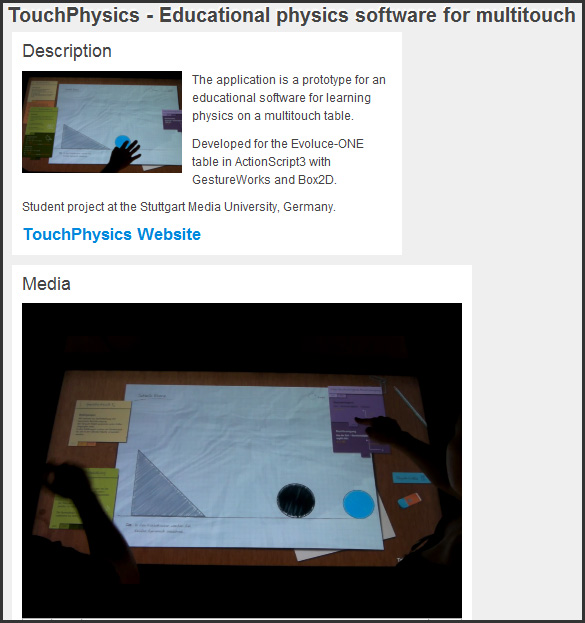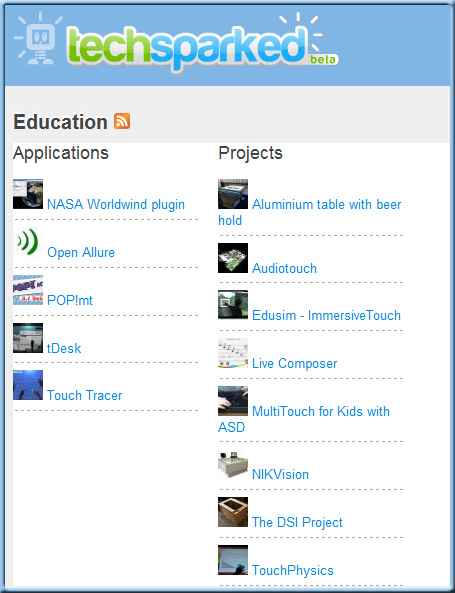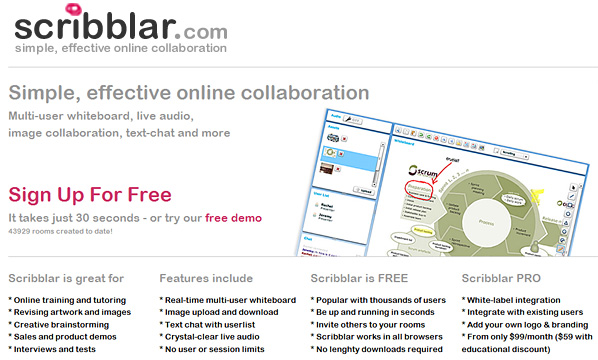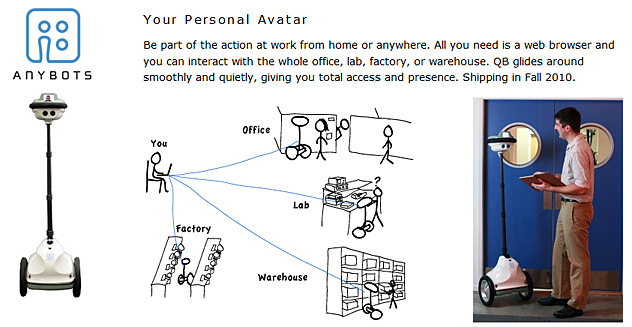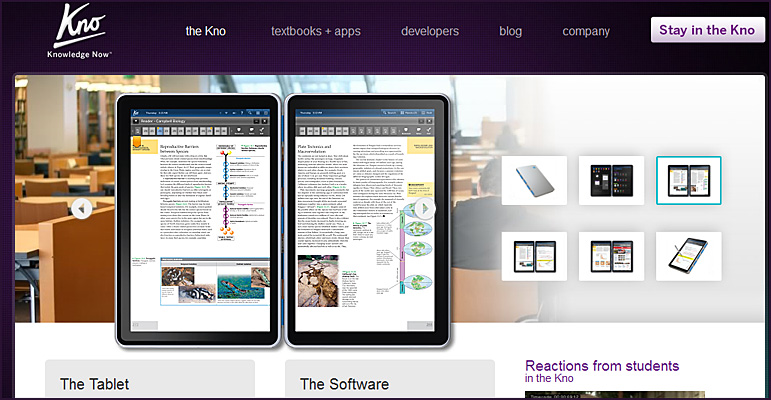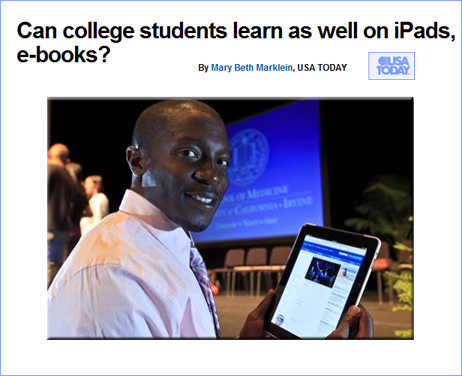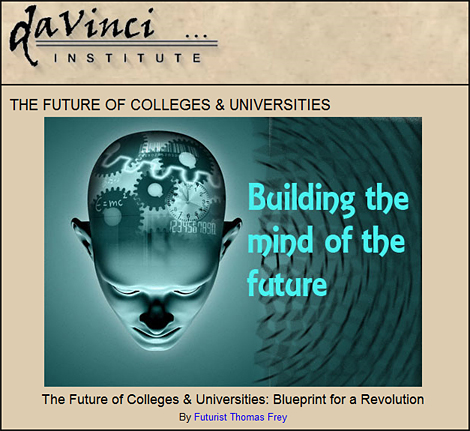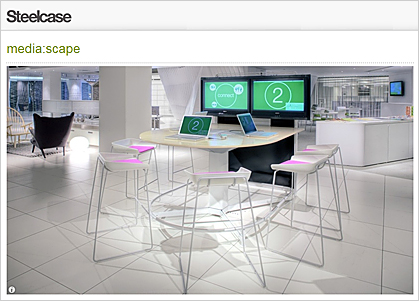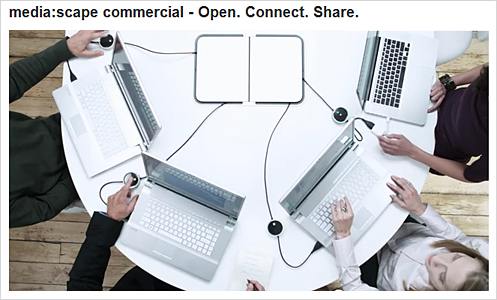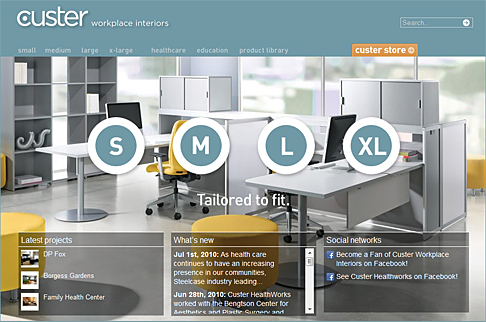Brick, Mortar, the Cloud and Drones – the Future of the Classroom –– from Kirsten Winkler
What if you could actively participate in a class that takes place on a campus on the other side of the world, not only watching a live stream but actually interacting with the teacher and writing your solution on the whiteboard?
What if you could be physically present on a campus on the other side of the world and talking to your professor before walking into the next class while sitting at home on your computer? Futuristic you say? Wrong. Take a look at the two videos below and see what is already possible today.
Also see:
.
Why Apple’s iTV will change everything — from Kevin Rose
The rumor: Apple will be releasing a revamped/renamed version of their ‘Apple TV’ set-top box, called ‘iTV’. The box will run the Apple iOS (same as the iPhone/iPad), and be priced around $99. Why will this change everything?
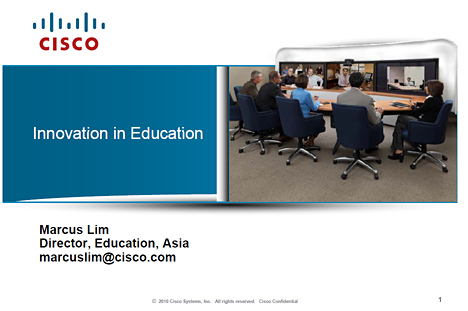
.
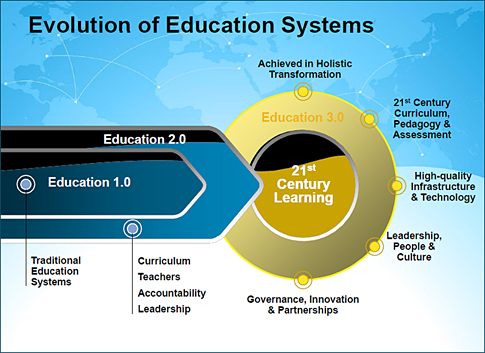
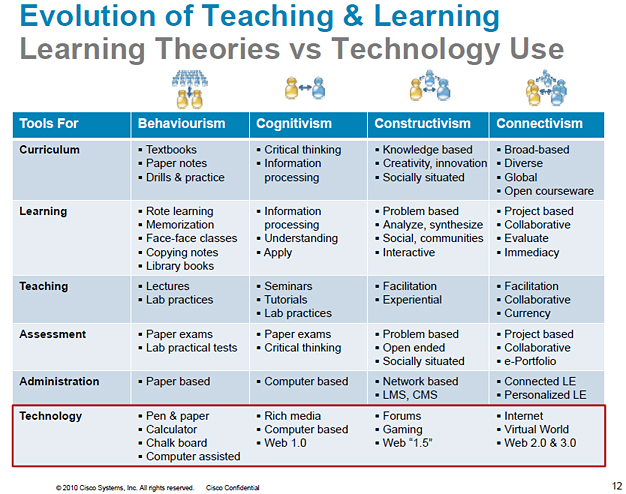
.
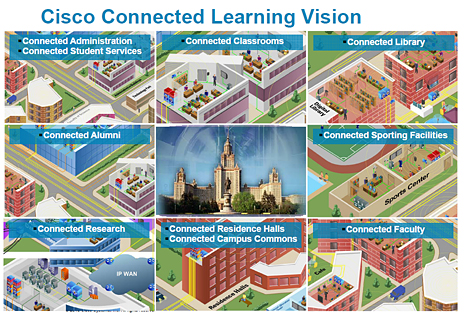
.
.
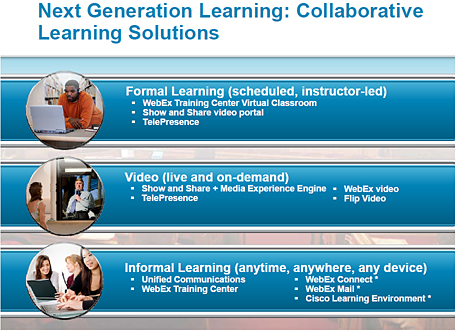
.
. .
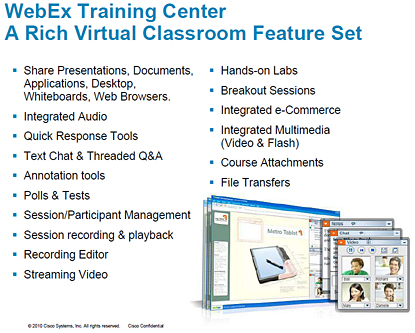
Emerging Technologies in Distance Education — by George Veletsianos [via G. Siemens]
Individual chapters are as follows:
PART 1: Foundations of Emerging Technologies in Distance Education
1. A definition of emerging technologies for education | George Veletsianos
2. Theories for Learning with Emerging Technologies | Terry Anderson
3. Imagining multi-roles in Web 2.0 Distance Education | Elizabeth Wellburn & BJ Eib
4. Beyond distance and time constraints: applying social networking tools and Web 2.0 approaches in distanceeducation | Mark J. W. Lee & Catherine McLoughlin
PART 2: Learning Designs for Emerging Technologies
5. “Emerging”: A re-conceptualization of contemporary technology design and integration | The Learning Technologies Collaborative
6. Developing Personal Learning Networks for Open & Social Learning | Alec Couros
7. Creating a Culture of Community in the Online Classroom Using Artistic Pedagogical Technologies | Beth Perry & Margaret Edwards
8. Structured Dialogue Embedded within Emerging Technologies | Yiannis Laouris, Gayle Underwood, Romina Laouri, Aleco Christakis
PART 3: Social, Organizational, & Contextual Factors in Emerging Technologies Implementations
9. Personal Learning Environments | Trey Martindale & Michael Dowdy
10. Open source course management systems in distance education | Andrew Whitworth & Angela Benson
11. Implementing Wikis in higher education institutions: the case of the Open University of Israel | Hagit Meishar-Tal, Yoav Yair and Edna Tal-Elhasid
12. The Use of Web Analytics in the Design and Evaluation of Distance Education | P. Clint Rogers, Mary R. McEwen & SaraJoy Pond
13. New communication options: A renaissance in IP use | Richard Caladine, Trish Andrews, Belinda Tynan, Robyn Smyth, & Deborah Vale
PART 4: Learner-learner, Learner-Content, & Learner-Instructor Interaction & Communication with Emerging Technologies
14. Using Social Media to Create a Place that Supports Communication | Rita Kop
15. Technical, Pedagogical and Cultural Considerations for Language Learning in MUVEs / Charles Xiaoxue Wang, Brendan Calandra & Youngjoo Yi
16. Animated Pedagogical Agents and Immersive Worlds: Two Worlds Colliding / Bob Heller & Mike Procter
From Spring 2010
…
From DSC:
If you are even remotely connected to higher education, then you *need* to read this one!
Most certainly, not everything that Thomas Frey says will take place…but I’ll bet you he’s right on a number of accounts. Whether he’s right or not, the potential scenarios he brings up ought to give us pause to reflect on ways to respond to these situations…on ways to spot and take advantage of the various opportunities that arise (which will only happen to those organizations who are alert and looking for them).
Interactive TV Today – News, Interviews, Research on Multiplatform Digital Interactive TV — via Lynn Marentette
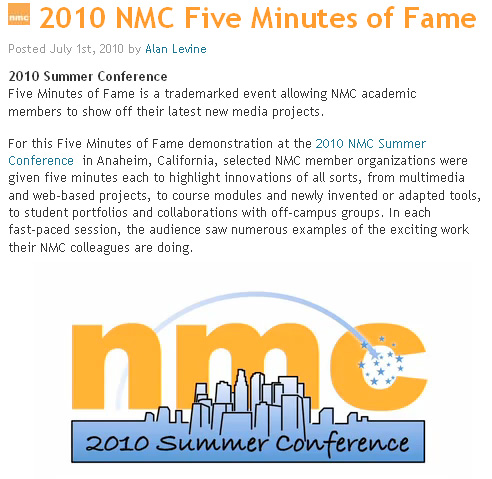 This year’s presentations included:
This year’s presentations included:
- Articulating Assessment: Digital Storytelling for Digital Work
Virginia Kuhn, University of Southern California - How IT Rescued a $100,000 No Budget Project
Lou Rera, Buffalo State College - Kindling Students – HCC’s eBook Classroom Project
Lorah Gough, Houston Community College System; Laurel Lacroix, Houston Community College System - Partnering for a 21st Century Education
Holly Ludgate, Full Sail University; Sharyn Gabriel, Orange County Public Schools; Kathy Craven, Full Sail University; Michael Cardwell, Full Sail University - Plasma Playground: Innovative Ideas for Training Students Techs
Helmut Baer, Dartmouth College - Timelines Tell All! Peasants and Revolutionaries Don’t Always Agree
Molly Ruggles, Massachusetts Institute of Technology - Touchless Interactive Art in the Personal Computer
Seiji Ikeda, University of Texas, Arlington; Collin Hover, University of Texas, Arlington - Using Voice Tools with Students in Online Courses
Gail Krovitz, Pearson Learning - Which Castle is That? Geotagging as a Tool for Research and Scholarship
Jared Bendis, Case Western Reserve University
Driving home the point on accessibility — InsideHigherEd.com
The U.S. Departments of Education and Justice on Tuesday released an open letter to colleges expressing concern that some institutions might be “using electronic book readers that are not accessible to students who are blind or have low vision” and warning them that the government will crack down on any institutions that are “requiring” disabled students to use emerging technology that does not comply with federal accessibility laws.









